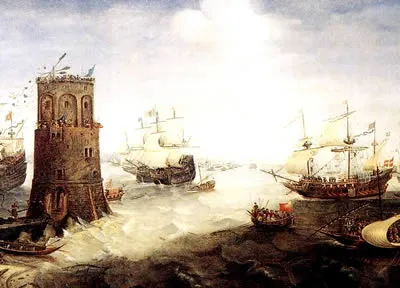Bismillah.
The 5th century Hijri (1009-1105 CE) was a period of significant political and intellectual developments in the Islamic world.
This era saw the rise of the Seljuk Empire, the flourishing of Islamic thought, and important shifts in leadership.
The Seljuk Empire (1037-1194 CE)
The Seljuks, a powerful Turkish dynasty, rose to prominence, uniting vast territories under Sunni Islam.
They established control over parts of Persia, Anatolia, and Iraq, creating a new political order.
The Seljuk Sultan, Tughril Beg, was instrumental in defeating rival factions and reclaiming Baghdad from Shiite Buyid rule.
The Seljuks were crucial in defending the Abbasid Caliphate and revitalizing Sunni scholarship, ensuring that Sunni Islam remained the dominant tradition in the Muslim world.
Educational Reforms (1064 CE)
One of the most notable figures of this period was Nizam al-Mulk, the vizier of the Seljuk sultans.
His most enduring contribution was the establishment of madrasas (Islamic educational institutions), notably the Nizamiyyah schools.
These madrasas became centers of learning, preserving and expanding knowledge in fields like theology, philosophy, and law.
The most famous of these was the Nizamiyya of Baghdad, where scholars like Al-Ghazali taught and contributed to Islamic intellectual thought.
The Crusades Begin (1096 CE)
The 5th century also witnessed the beginning of the Crusades, with the First Crusade launched in 1096.
European Christian forces sought to capture Jerusalem from Muslim control, resulting in a series of military campaigns.
The Seljuks and other Muslim rulers faced significant challenges from the Crusaders, who briefly succeeded in establishing Christian kingdoms in the Levant.
This marked the start of a long, complex period of conflict between Muslim and Christian powers.
Al-Ghazali’s Influence (1058-1111 CE)
One of the most influential Islamic scholars of this century was Al-Ghazali.
His works, especially “Ihya’ Ulum al-Din” (The Revival of the Religious Sciences), reconciled Islamic orthodoxy with Sufi mysticism and had a profound impact on Islamic philosophy.
Al-Ghazali’s contributions helped bridge the gap between religious scholars (ulama) and mystics, integrating spiritual depth with legal and philosophical thought.
The Seljuk Legacy
The Seljuks also made notable contributions to Islamic architecture.
The construction of mosques, madrasas, and caravanserais across their empire reflected their power and cultural sophistication.
The iconic “four-iwan” mosque design, seen in Iran and Central Asia, was developed during this period and continues to influence Islamic architecture today.
Conclusion
The 5th century Hijri was marked by the emergence of the Seljuk Empire, the intellectual influence of scholars like Nizam al-Mulk and Al-Ghazali, and the beginning of the Crusades.
This period of both conflict and flourishing laid the foundation for later Islamic empires and intellectual movements, solidifying the importance of education, architecture, and political unity in Islamic history.
This century represents a critical time of resilience and growth for the Islamic world, setting the stage for future advancements in culture, education, and governance.
Which event was the most significant to you?
Comment below!
